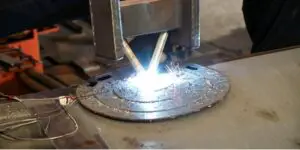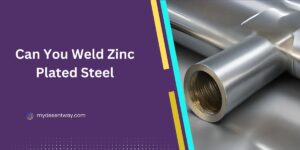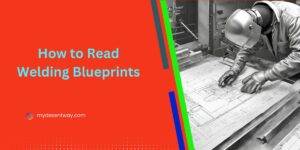Table of Contents
- What Is Mill Scale?
- Mill Scale’s Impact on Welding
- Precautions When Dealing with Mill Scale
- Mill Scale Removal Techniques
- How Does Mill Scale Affect a Weld?
- What is the Mill Scale After Welding?
- Why is it Called the Mill Scale?
- What is the Mill Scale in the Welding Formula?
- What is the Mill Scale on Steel?
- How is the Mill Scale Formed?
- Conclusion
- Mill Scale in Welding: FAQs
In the world of welding, there are various factors and materials to consider, and one of the often overlooked elements is mill scale. Mill scale is an integral part of welding, and understanding its properties and implications is crucial for welders of all levels. In this article, we will delve into the world of mill scale in welding, exploring what it is, how it affects the welding process, and what precautions should be taken when dealing with it.

What Is Mill Scale?
Mill scale, also known as mill finish, is a layer of iron oxide that forms on the surface of steel or iron materials during the manufacturing process. It typically appears as a dark, flaky layer and is a byproduct of hot rolling processes such as those used in steel production. Mill scale can vary in thickness and texture, making it important to recognize its presence and characteristics when welding.
Mill Scale’s Impact on Welding
- Surface Contamination
One of the primary concerns with mill scale in welding is its potential to contaminate the weld. When welding over a surface covered in mill scale, the impurities present in the scale can be trapped in the weld, leading to weakened and brittle joints.
- Reduced Weld Quality
Welding over mill scale can result in welds that are less aesthetically pleasing and structurally sound. The presence of mill scale can lead to porosity in the weld, compromising its integrity.
- Increased Spatter
Welding over mill scale can also increase the production of weld spatter, which can be a safety hazard and create additional cleanup work.
Precautions When Dealing with Mill Scale
- Surface Preparation
To mitigate the adverse effects of mill scale, proper surface preparation is essential. This includes removing the mill scale from the workpiece using methods such as grinding, wire brushing, or sandblasting.
- Protective Gear
Welders should always wear appropriate personal protective equipment (PPE) when dealing with mill scale, as it can produce harmful dust and particles when removed.
- Material Selection
Consider using materials that are free from mill scale when possible, or be prepared for additional surface preparation if mill scale is present.
Mill Scale Removal Techniques
- Grinding
Grinding is a common method for removing mill scale. It involves using abrasive tools to grind away the scale, exposing clean metal underneath.
- Wire Brushing
Wire brushing is another effective technique for removing the mill scale. A wire brush can be used to scrub away the scale from the surface.
- Chemical Removal
Chemical solutions are available for mill scale removal, but they should be used with caution and according to manufacturer guidelines.
How Does Mill Scale Affect a Weld?
Mill scale can significantly affect the quality of a weld. When welding over mill scale, it can trap impurities and create voids in the weld, leading to reduced weld integrity. The presence of mill scale can also weaken the bond between the base metal and the weld, making the joint less durable and prone to defects.
What is the Mill Scale After Welding?
After welding, the mill scale remains on the surface of the metal. However, its properties may have changed due to the high temperatures involved in welding. The heat can cause the mill scale to become more brittle and easier to remove.
Why is it Called the Mill Scale?
The mill scale gets its name from its origin. It forms during the hot-rolling process in steel mills, where steel is heated to high temperatures and passed through rollers. As the steel comes into contact with oxygen in the air, iron oxides are formed, creating the characteristic scale on the surface.
What is the Mill Scale in the Welding Formula?
The formula for mill scale in welding can be expressed as:
Mill Scale (FeO·Fe2O3)
This formula signifies that the mill scale is primarily composed of iron oxide (FeO) and a mixture of Fe2O3. The proportion of these components may vary depending on the specific conditions in which the mill scale forms.
What is the Mill Scale on Steel?
Mill scale on steel is a layer of iron oxide that covers the surface of the metal. It can vary in thickness and appearance but generally appears as a dark, scaly layer. Mill scale is often seen on steel surfaces after hot-rolling processes and needs to be addressed before welding to ensure a strong and clean weld.
How is the Mill Scale Formed?
The mill scale is formed during the hot-rolling process of steel production. When steel is heated to high temperatures and passed through rollers, it comes into contact with oxygen in the air. This leads to the oxidation of iron, resulting in the formation of iron oxide scales on the steel surface, which is what we know as mill scale.
Conclusion
In the world of welding, understanding mill scale and its impact on the welding process is crucial for achieving high-quality welds. By following proper procedures for mill scale removal and surface preparation, welders can ensure that their welds are strong, durable, and free from defects. Remember that mill scale, when handled correctly, can be a manageable aspect of the welding process.
Thank you for reading this comprehensive guide on “What is Mill Scale in Welding.” If you found this information helpful, please like and share this article.
video by weld.com
Mill Scale in Welding: FAQs
Is mill scale always present on steel materials?
No, mill scale is not always present, but it can be commonly found on hot-rolled steel materials.
Can I weld over the mill scale without any issues?
Welding over mill scale can lead to various issues, including weakened welds and increased spatter. It is advisable to remove it before welding.
What safety precautions should I take when removing the mill scale?
When removing the mill scale, wear appropriate PPE to protect against dust and particles. Ensure good ventilation in your workspace.
Are there any eco-friendly methods for mill scale removal?
Some environmentally friendly methods for mill scale removal involve mechanical methods like wire brushing and abrasive blasting.
Can mill scale be recycled or repurposed?
Yes, mill scale can be recycled and repurposed in various industries, such as in the production of iron-based products.










1 thought on “What is Mill Scale in Welding: A Comprehensive Guide”